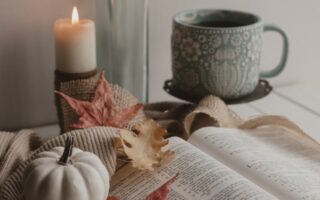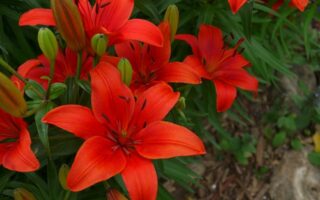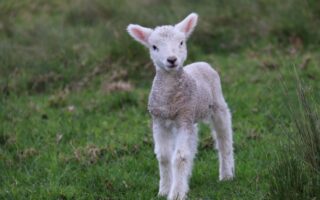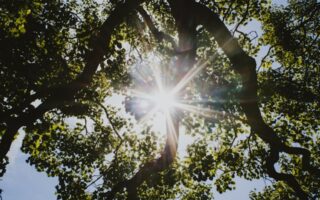One day, a few years ago in July, my sixteen-month-old granddaughter Eliza and I came upon a bush in the corner of our neighbor’s yard. The bush was flowering and when you drew near, you could see that it was moving and alive with buzzing bumble bees flying in and out of the flowers on the bush. I was carrying Eliza and when we got near enough to the bush to see the bees, she became very still and silent. Her face had a look of concentration that seemed far too mature for her one year old being. She was mesmerized by that bush and we stood silently together watching those bees for quite a long time. I used my scant knowledge of bee life to explain to Eliza what the bees were doing. She seemed unimpressed with my explanation but after some time wanted me to take her into the house.
We walked through the front door and Eliza ran to her mother and said, “Mama, bzzzzzz, Mama, bzzzzzz,” as she pointed repeatedly to the door. She wanted to show her mother the bees. Christina obliged her and went outside with her to see the bees. When they returned, Eliza went to her father and said, “Dada, bzzzzzz, Dada, bzzzzzz,” once again repeatedly pointing to the door. Patrick obliged her and went outside with her to see the bees. She continued this ritual until she had taken each person in the house one by one out to see the bees.
Eliza’s experience of the bees that day was an experience of wonder as pure and simple as wonder gets. That bush alive with bees filled her simultaneously with fascination and terror. Her seeing that day was fully alive. It tremored through her whole body and though she was a little bit afraid of those bees, she could not take her eyes from them. She was too young to fit those bees into any categories or to know what they were doing, too young to understand or name that experience, but she could not stop trying to find a way to communicate with others the impact this experience had on her. Mama, bzzzzzz, pointing, pointing, Dada, bzzzzzz, pointing, pointing.
My memory of the day Eliza and I came upon the bush with the bees was triggered when I read about an Eastern Orthodox icon of Mary, the Most Holy Theotokos (God bearer), called the “Unburnt Bush.” Today this icon takes several forms but in one of its earliest forms, it depicts Mary holding the infant Jesus on her lap seated in the center of a burning bush. Moses is in front of her, removing his sandals because he stands on holy ground (Ex 3:5). This icon is believed to have first appeared at St. Catherine’s monastery at Mt. Sinai. It is a representation of the imaginative linking of the burning bush with the incarnation that can be traced to the fourth century writings of Gregory of Nyssa.
The icon of the “Unburnt Bush” evokes the numinous quality of holiness that is central to both the story of the burning bush and the annunciation. In both stories the transcendent, holy other quality of God is palpable even as that transcendent, holy other quality of God draws near and promises to stay near. God draws so near to Mary that she becomes the burning bush. She is filled with the fiery presence of God but is not consumed. God’s fiery presence is born through her in Jesus and it is clear from the start that Jesus has drawn near to save, to befriend, to be found by all who look for him in and through their daily experiences.
Wonder is a way of knowing in which we allow ourselves to participate in something we do not fully understand. Wonder awakens our hearts. Wonder does not control but surrenders. Wonder does not grasp at knowledge but allows us to recognize our limitations, our powerlessness, to gaze in amazement, to worship, to pray, and to break into song. Wonder is a path we walk toward wisdom. But we must listen for it. We must learn how to see. Most of our lives are spent learning to control, grasp, understand, and categorize the world around us. We can lose ourselves in this process and cut ourselves off from the channels of wonder. Wonder gives us access to the Word that is beyond us, asks us to trust what we do not understand. Wonder meets us where we are standing, asks us to remove our sandals, and gaze in amazement, for we are standing on holy ground.













